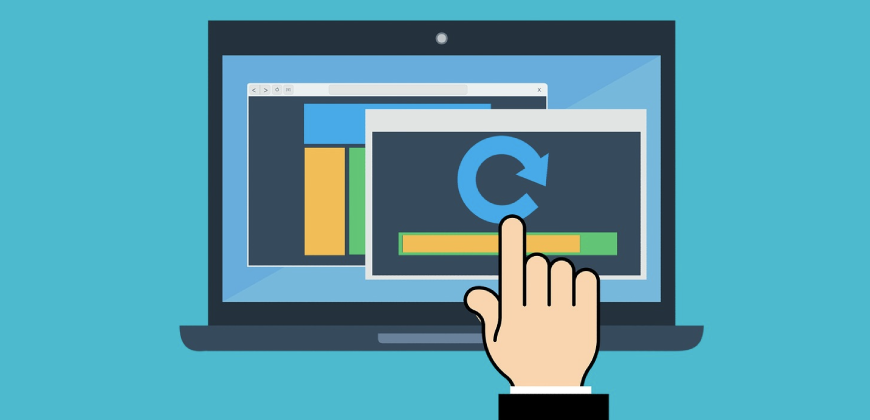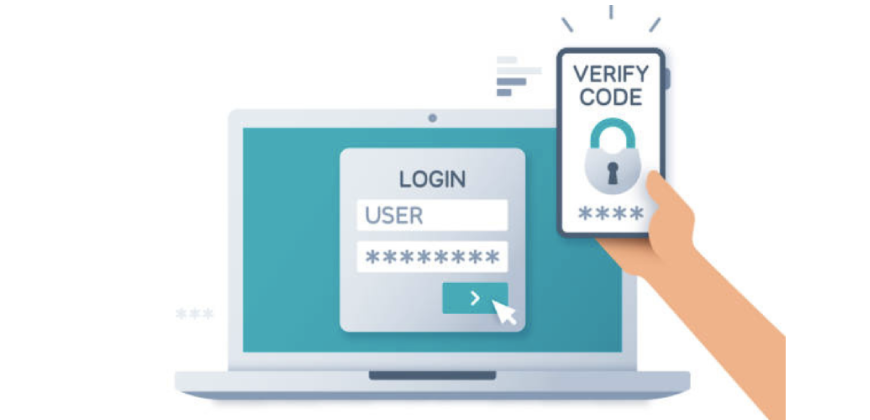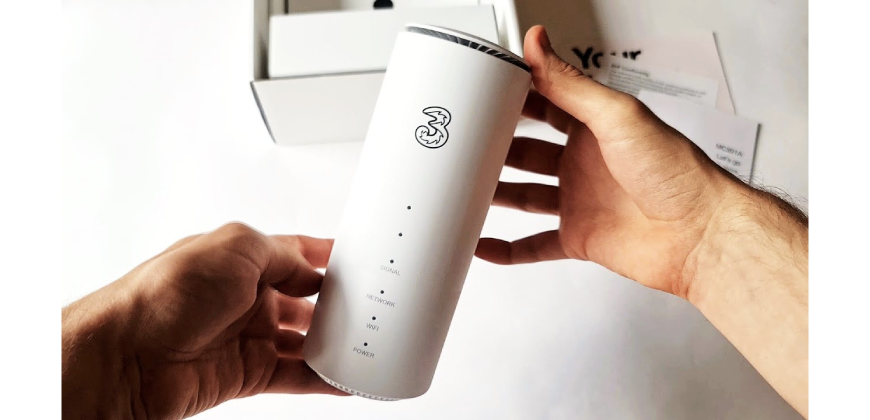
In today's digital age, staying safe online is more important than ever. From protecting your personal information to safeguarding against cyber threats, taking proactive steps to enhance your online security is essential.
In this blog, Three UK shares expert advice and practical tips to help you stay safe while navigating the digital landscape. Discover 13 immediate steps you can take right now to protect yourself online and enjoy a safer, more secure online experience.
Update Your Devices and Software
Ensuring that your devices, operating systems, and software are regularly updated is crucial for maintaining optimal security. By promptly installing updates, you can effectively patch security vulnerabilities and protect your devices against a wide range of cyber threats.
Enabling automatic updates whenever feasible is highly recommended, as it ensures that you're consistently running the most up-to-date versions of your software, equipped with the latest security patches and bug fixes.
Strengthen Your Passwords
Creating strong and unique passwords is essential for protecting your online accounts from unauthorized access and potential security breaches. Here's a more detailed breakdown of how to strengthen your passwords effectively
Complexity is Key When crafting passwords, aim for complexity by incorporating a combination of uppercase and lowercase letters, numbers, and special characters. Avoid using easily guessable information such as birthdays, names, or common phrases, as these can be vulnerable to brute force attacks or dictionary-based hacking methods.
Unique for Each Account It's crucial to use a different password for each of your online accounts. Reusing passwords across multiple platforms increases your vulnerability in the event of a data breach. If one account is compromised, hackers could potentially gain access to all your accounts with the same password.
Length Matters Longer passwords are generally more secure than shorter ones. Aim for a minimum of 12 characters to enhance security. Consider creating passphrases, which are longer combinations of words or phrases that are easier to remember but harder for hackers to crack.
Consider Using a Password Manager Managing multiple complex passwords can be challenging, which is where password managers come in handy. These tools generate, store, and autofill strong passwords for you, eliminating the need to remember them all. Make sure to choose a reputable password manager with robust security features and encryption protocols to keep your passwords safe.
Regularly Update Your Passwords It's essential to periodically update your passwords to maintain security. Aim to change your passwords at least every six months or sooner if you suspect any potential compromise. This practice reduces the risk of unauthorized access to your accounts over time.
By following these guidelines and adopting strong password practices, you can significantly reduce the risk of unauthorized access to your online accounts and enhance your overall cybersecurity posture. Remember, your passwords are the first line of defense in protecting your digital identity, so investing time and effort into creating strong and unique passwords is well worth it in the long run.
Enable Two-Factor Authentication (2FA)
Enabling two-factor authentication (2FA) is a critical step in bolstering the security of your online accounts. Here's a detailed guide on how to set it up
Check Availability First, check if the online service or platform you're using offers two-factor authentication. Most reputable websites and apps provide this feature to enhance security.
Access Security Settings Once logged into your account, navigate to the security settings or account settings section. Look for an option related to two-factor authentication or multi-factor authentication.
Enable 2FA Select the option to enable two-factor authentication. You may be prompted to choose your preferred method of receiving verification codes.
Choose Verification Method Typically, you'll have the option to receive verification codes via SMS/text message, authenticator apps (such as Google Authenticator or Authy), or email. Choose the method that works best for you.
Verify Your Identity After selecting your preferred verification method, you'll need to verify your identity. This may involve entering your current password or confirming your email address or phone number.
Receive Verification Code Depending on the method you chose, you'll receive a one-time verification code via SMS/text message, authenticator app, or email.
Enter Verification Code Once you receive the verification code, enter it into the designated field on the website or app. This confirms your identity and completes the setup process.
Backup Codes (Optional) Some services provide backup codes that you can use if you're unable to access your primary verification method. It's a good idea to save these codes in a secure location in case of emergencies.
Verify Setup After entering the verification code, the website or app will typically confirm that two-factor authentication has been successfully enabled on your account.
Test Login To ensure that 2FA is working correctly, log out of your account and attempt to log back in. You should be prompted to enter a verification code in addition to your password.
Some More Privacy Steps for Better Security
Secure Your Wi-Fi Network
Secure your home Wi-Fi network with a strong password and encryption protocol (WPA2 or WPA3). Avoid using default or easily guessable passwords, and consider hiding your network's SSID to minimize visibility to unauthorized users.
Get a Safer Wi-fi Netfork for Your Family - 6 Months @ Half Price + No Installation Fee
Use Secure Connections
When accessing sensitive websites or transmitting confidential information online, ensure you're using a secure connection by checking for HTTPS in the URL address bar. Avoid connecting to public Wi-Fi networks for sensitive transactions, as they may be vulnerable to interception.
Be Wary of Phishing Attempts
Stay vigilant against phishing emails, texts, and calls designed to trick you into revealing personal information or clicking on malicious links. Look out for signs of phishing, such as unsolicited requests for sensitive information, spelling or grammatical errors, and suspicious sender addresses.
Review Privacy Settings
Regularly review and adjust the privacy settings on your social media accounts, apps, and devices to control the information you share and who can access it. Limit the visibility of your personal data and consider adjusting privacy settings to maximize security.
Install Antivirus Software
Protect your devices from malware, viruses, and other online threats by installing reputable antivirus software. Keep your antivirus software updated and perform regular scans to detect and remove any malicious software that may compromise your security.
Backup Your Data
Implement a regular backup routine to safeguard your important files and documents against data loss due to hardware failure, theft, or cyber attacks. Use cloud storage services or external hard drives to securely backup your data and ensure peace of mind.
Educate Yourself About Online Scams
Stay informed about common online scams and tactics used by cyber criminals to defraud unsuspecting individuals. Educate yourself and your family members about the warning signs of scams and how to avoid falling victim to them.
Limit Personal Information Sharing
Be cautious about sharing personal information online, including on social media platforms, forums, and websites. Avoid oversharing details such as your full name, address, phone number, and financial information, as this information can be used for identity theft and fraud.
Practice Safe Online Shopping
When shopping online, only purchase from reputable websites and ensure the website is secure before entering payment information. Look for trust indicators such as padlock icons in the browser address bar and verified payment gateways to confirm the legitimacy of the website.
Stay Informed and Stay Safe
Stay up to date on the latest cybersecurity threats, trends, and best practices by following reputable cybersecurity blogs, news outlets, and resources. By staying informed and proactive, you can better protect yourself against emerging threats and vulnerabilities.
Taking proactive steps to enhance your online security is essential for safeguarding your personal information, privacy, and financial well-being in today's digital world. By following these 13 immediate steps recommended by Three UK, you can strengthen your defenses against cyber threats and enjoy a safer, more secure online experience. Remember, staying safe online is a shared responsibility, and with vigilance and awareness, we can all contribute to a safer digital environment for ourselves and others.
Powered by Froala Editor




